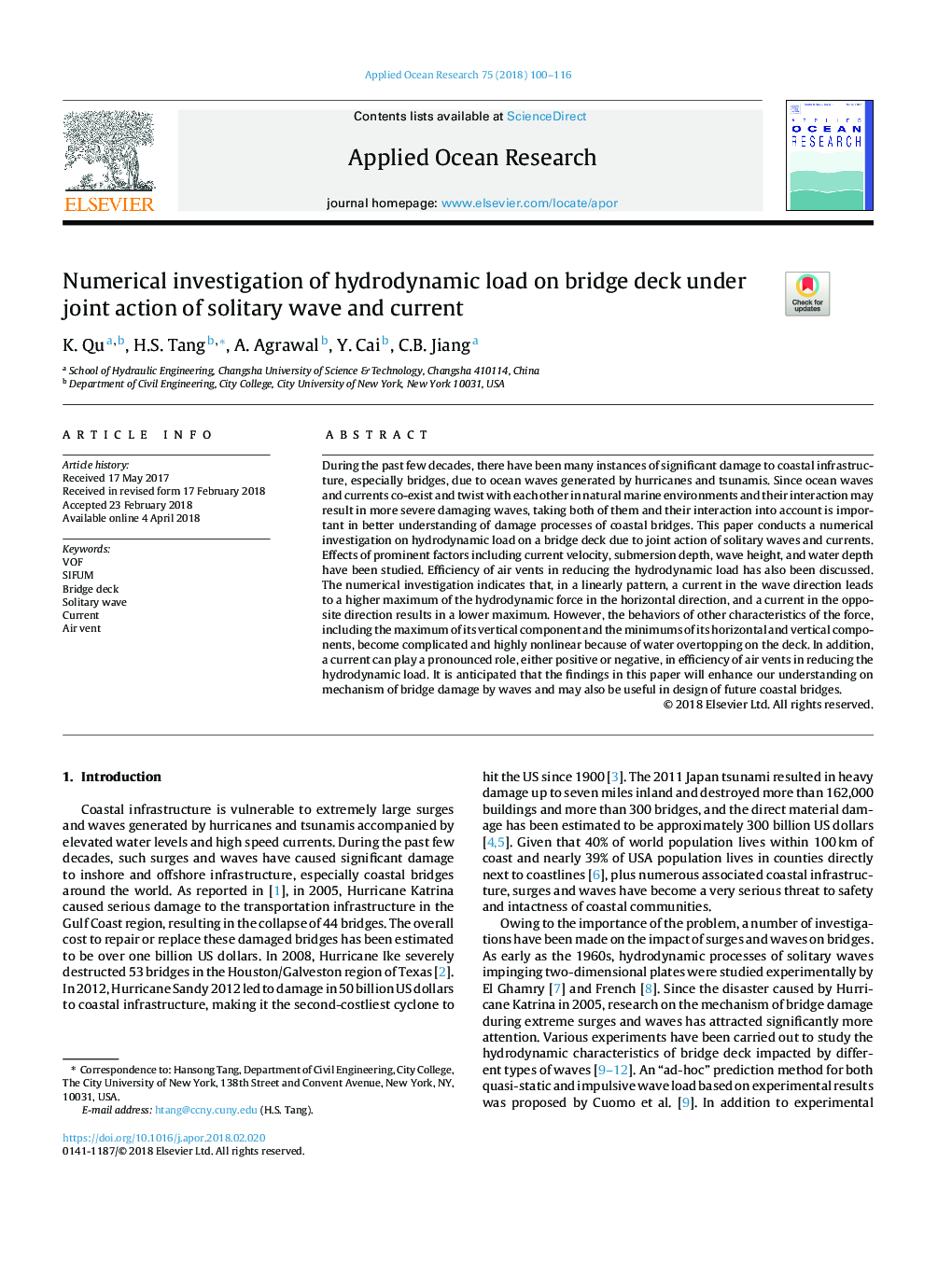| Article ID | Journal | Published Year | Pages | File Type |
|---|---|---|---|---|
| 8059263 | Applied Ocean Research | 2018 | 17 Pages |
Abstract
During the past few decades, there have been many instances of significant damage to coastal infrastructure, especially bridges, due to ocean waves generated by hurricanes and tsunamis. Since ocean waves and currents co-exist and twist with each other in natural marine environments and their interaction may result in more severe damaging waves, taking both of them and their interaction into account is important in better understanding of damage processes of coastal bridges. This paper conducts a numerical investigation on hydrodynamic load on a bridge deck due to joint action of solitary waves and currents. Effects of prominent factors including current velocity, submersion depth, wave height, and water depth have been studied. Efficiency of air vents in reducing the hydrodynamic load has also been discussed. The numerical investigation indicates that, in a linearly pattern, a current in the wave direction leads to a higher maximum of the hydrodynamic force in the horizontal direction, and a current in the opposite direction results in a lower maximum. However, the behaviors of other characteristics of the force, including the maximum of its vertical component and the minimums of its horizontal and vertical components, become complicated and highly nonlinear because of water overtopping on the deck. In addition, a current can play a pronounced role, either positive or negative, in efficiency of air vents in reducing the hydrodynamic load. It is anticipated that the findings in this paper will enhance our understanding on mechanism of bridge damage by waves and may also be useful in design of future coastal bridges.
Related Topics
Physical Sciences and Engineering
Engineering
Ocean Engineering
Authors
K. Qu, H.S. Tang, A. Agrawal, Y. Cai, C.B. Jiang,
